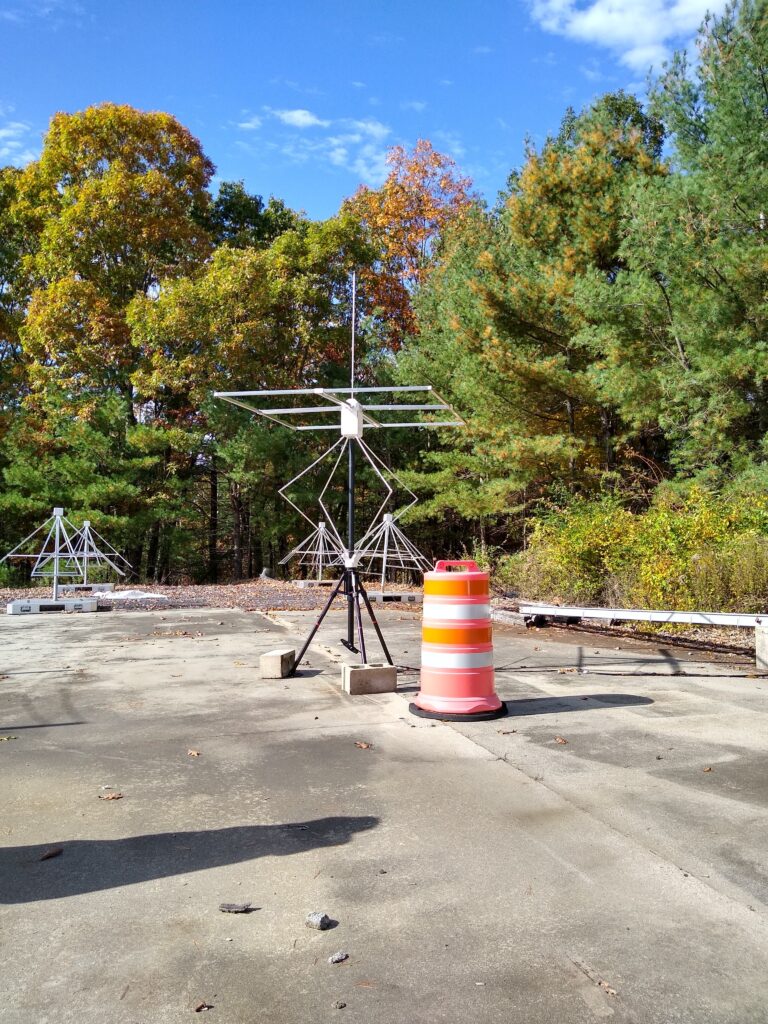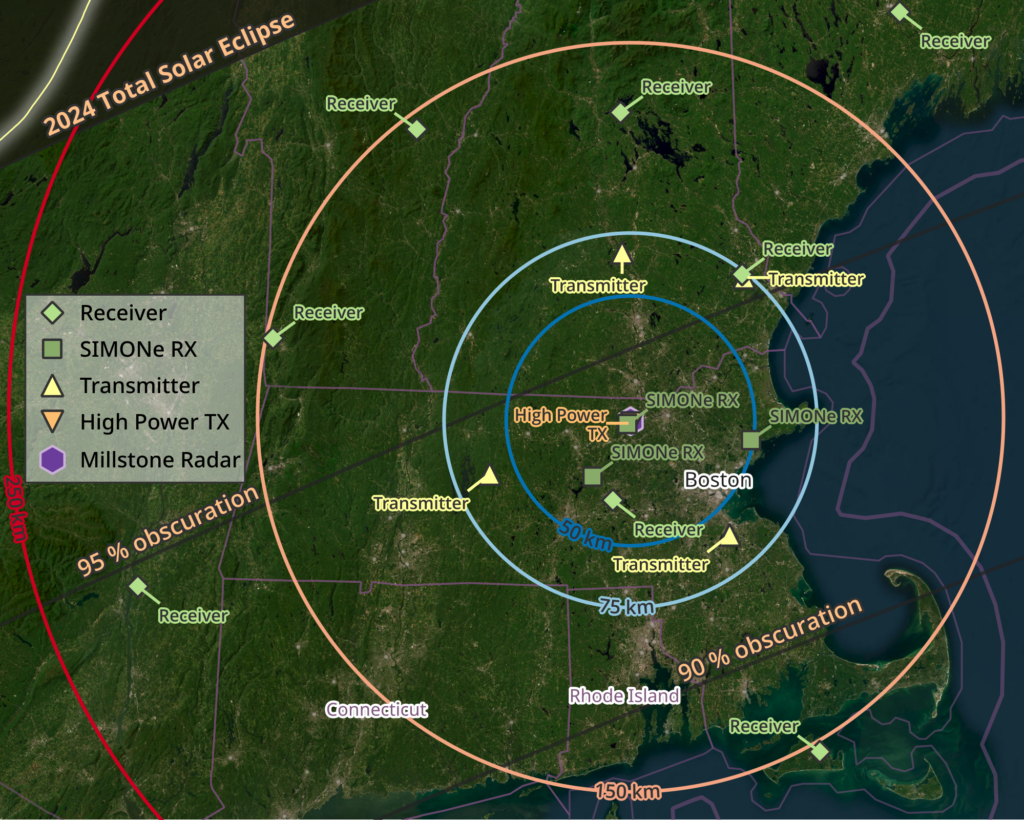Electromagnetic Vector Sensor Ionospheric Sounder (EMVSIS)
While Haystack scientists and engineers will watch the 2024 solar eclipse with special glasses like everyone else, they are also new types of radar to study the Earth’s atmosphere—including the ionosphere, the thermosphere, and meteors.
Exploring the Ionosphere and Thermosphere during the 2024 Eclipse with a Novel Radar Network

A team of Haystack scientists are deploying small, portable antennas to create what is called a distributed array at locations around New England, within a 250km radius of MIT Haystack Observatory. These antennas are being installed in New Englanders’ backyards, fields, parking lots, and institutions, and will collect data for a period of three months, including conditions before and after the actual eclipse in April 2024. The network may remain in place after this initial period.
When the sun’s energy is blocked for a period of time during the eclipse, the Earth’s atmosphere is significantly affected—particularly the ionosphere, the layer of the Earth’s atmosphere that contains charged particles, because the energy that creates the activity within the ionosphere comes from the sun.
Scientists at Haystack have long studied these effects before, during, and after eclipses. An example is the discovery by Dr. Shunrong Zhang and team of dramatic “bow waves” launched during the 2017 eclipse.
This new project will monitor the ionosphere with two new sensors: the EM Vector Sensor Ionosonde (EMVSIS) and the Zephyr Meteor Wind Radar.
Electromagnetic Vector Sensor Ionospheric Sounder (EMVSIS)
The EMVSIS array consists of two types of antennas: a low-power transmit dual-polarized antenna, and a vector-sensor receiver. The vector-sensor receiver allows for measurement of the direction of arrival of the signal that will be bounced off the ionosphere from the low-power transmitter. This information will give scientists new ways to measure the Earth’s ionosphere, which will be put to great use during the 2024 total solar eclipse. The network will remain in place, delivering information on the ionosphere, throughout the current period of “solar max,” or greatest solar activity in an approximately 11-year cycle. Paired with the Zephyr radar system, scientists will be able to study the interactions between the charged ionosphere and the neutral atmosphere.

Information for EMVSIS Sites
Sites hosting one or more of the new antennas can download information here:
If you are hosting one of the antennas and have questions, please email the eclipse project team at Haystack2024EclipseCampaign@mit.edu. And thank you!
Project Scientists
Sponsor
This project is sponsored by the Office of Naval Research (https://www.nre.navy.mil).
